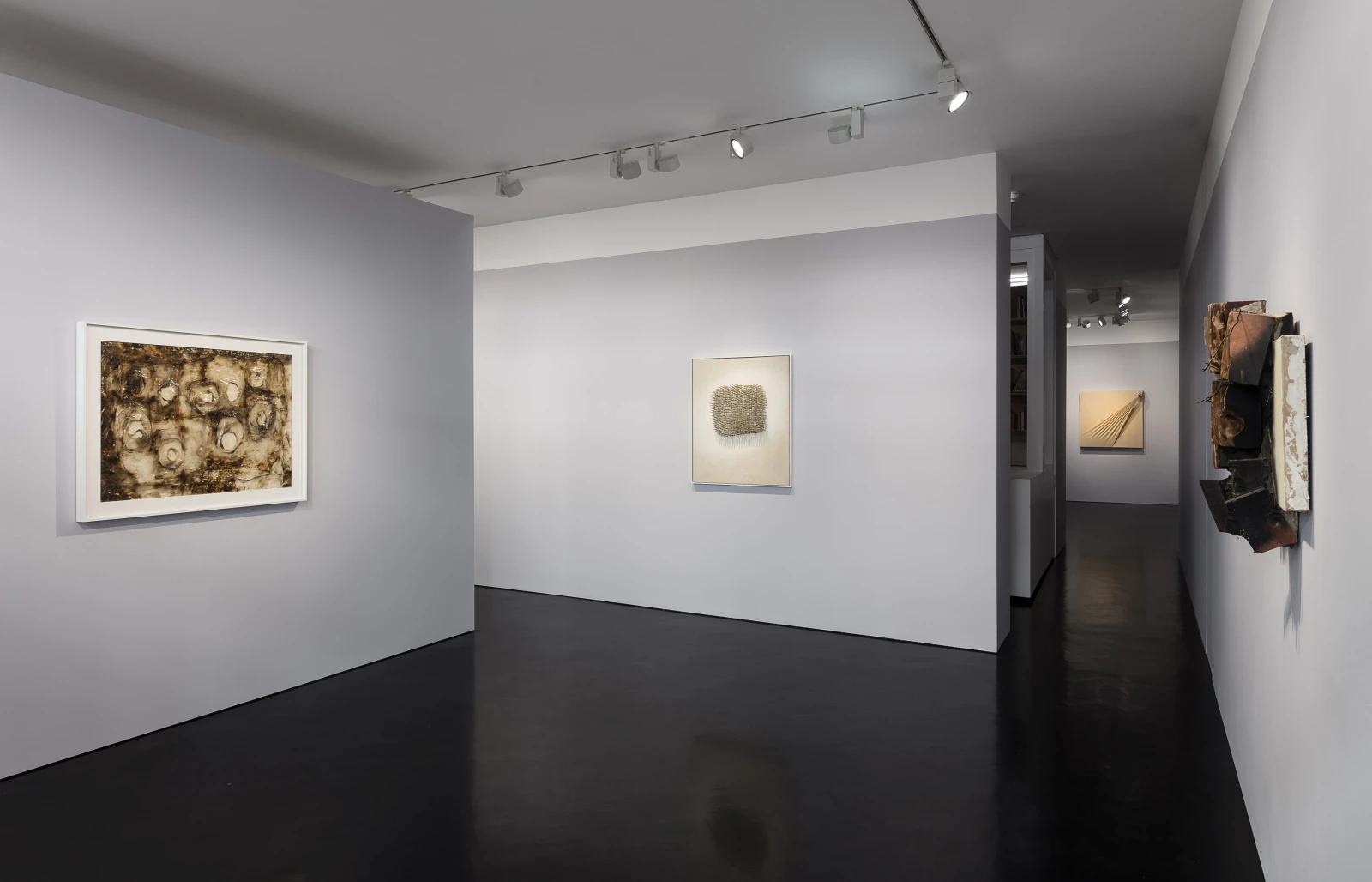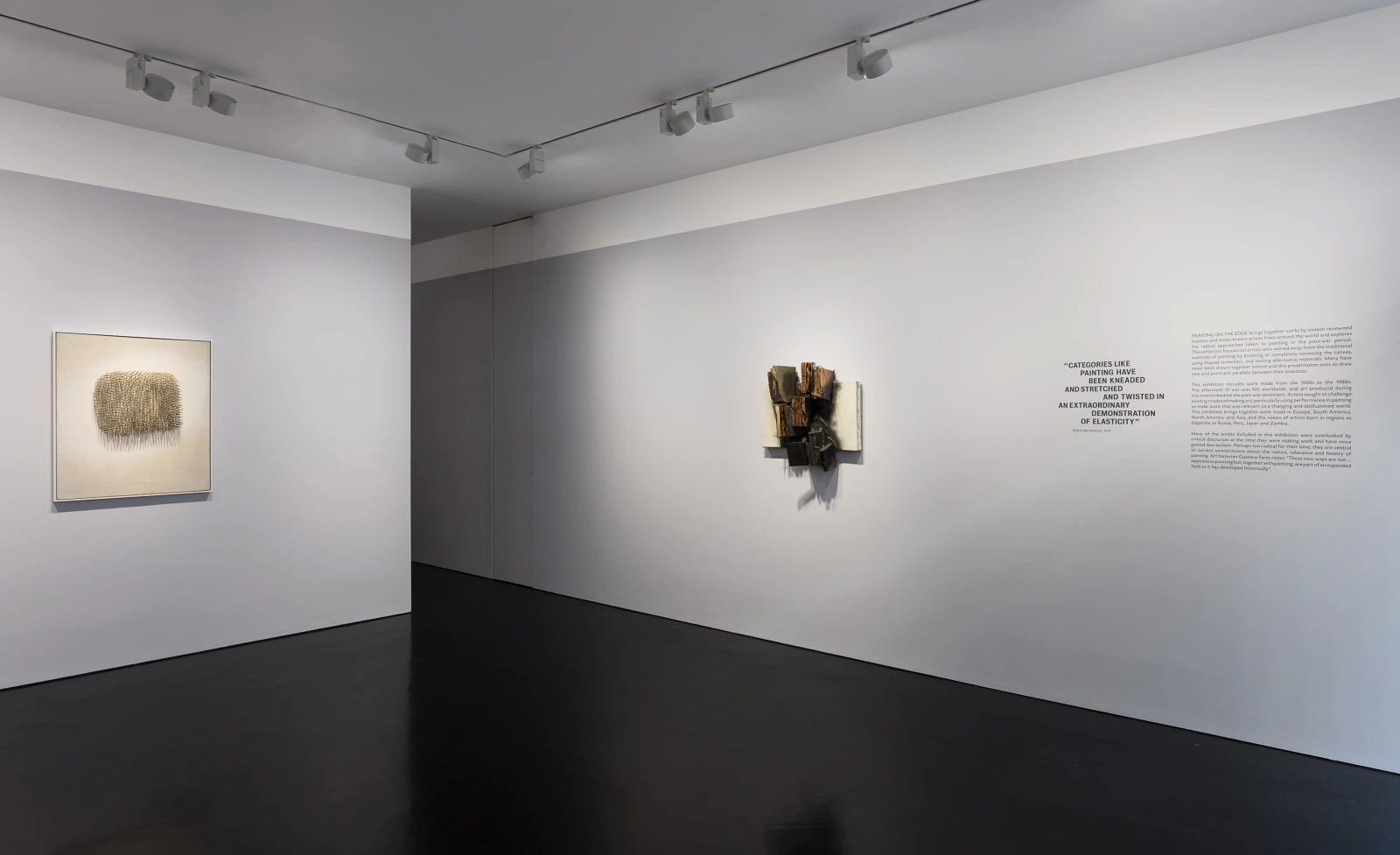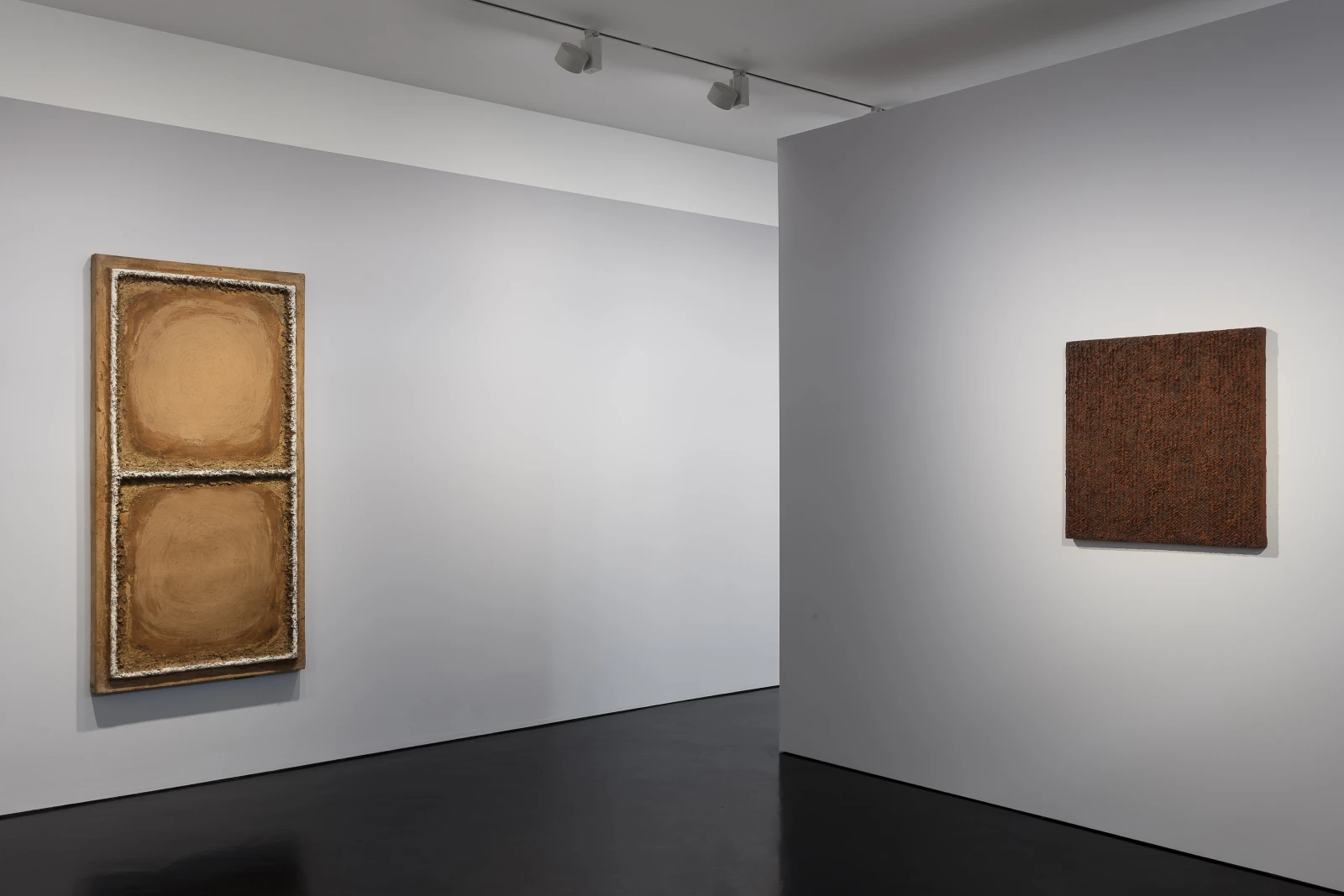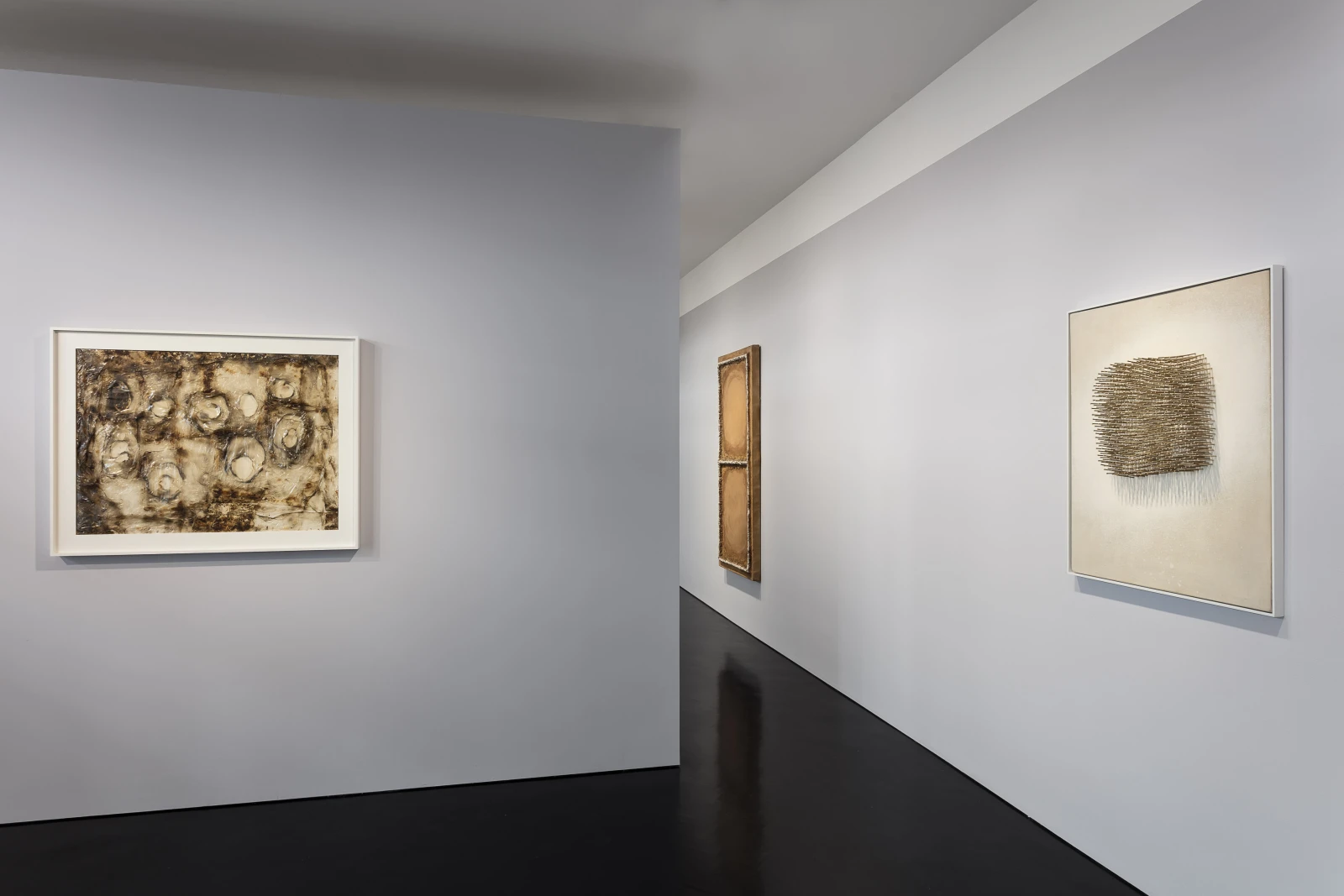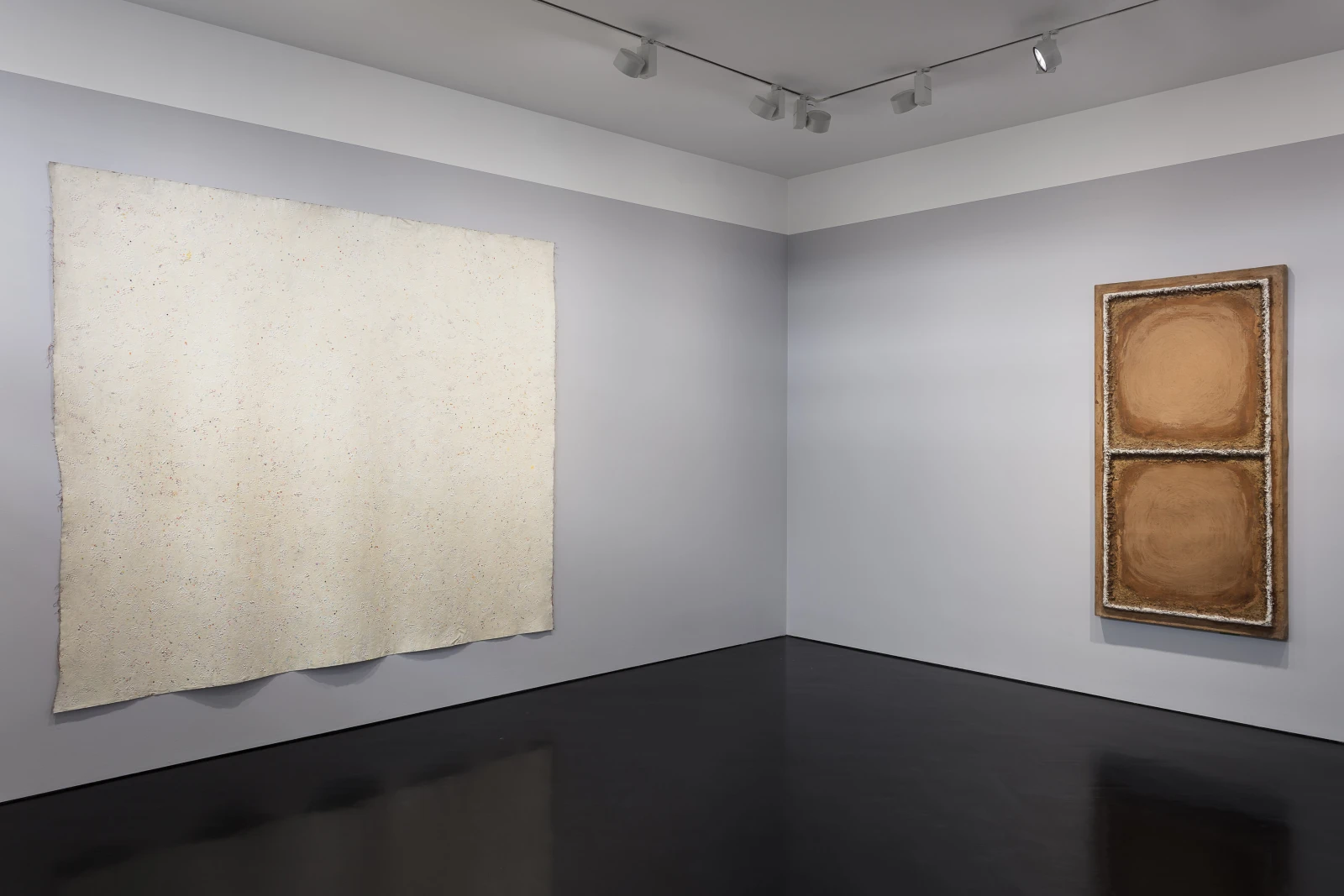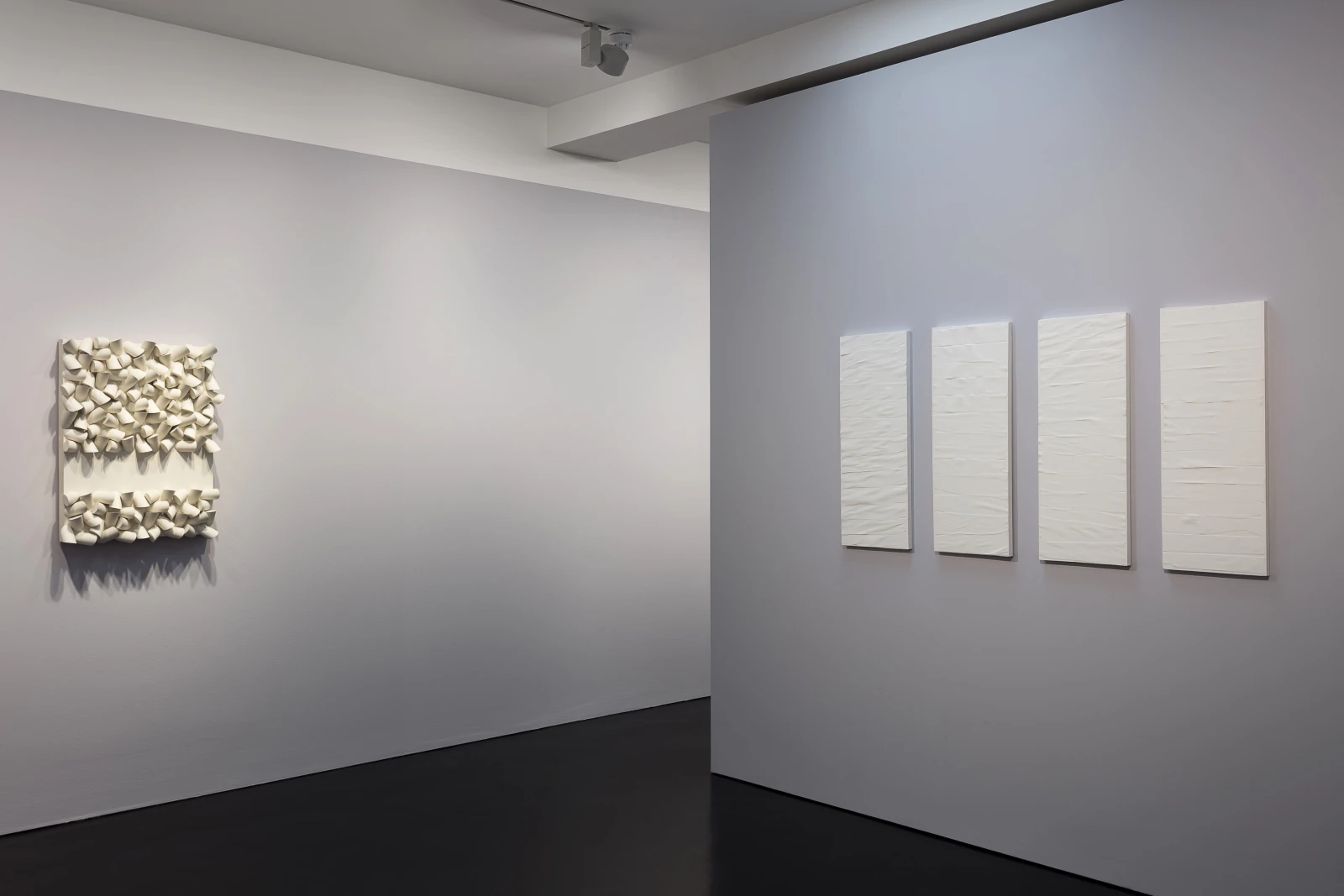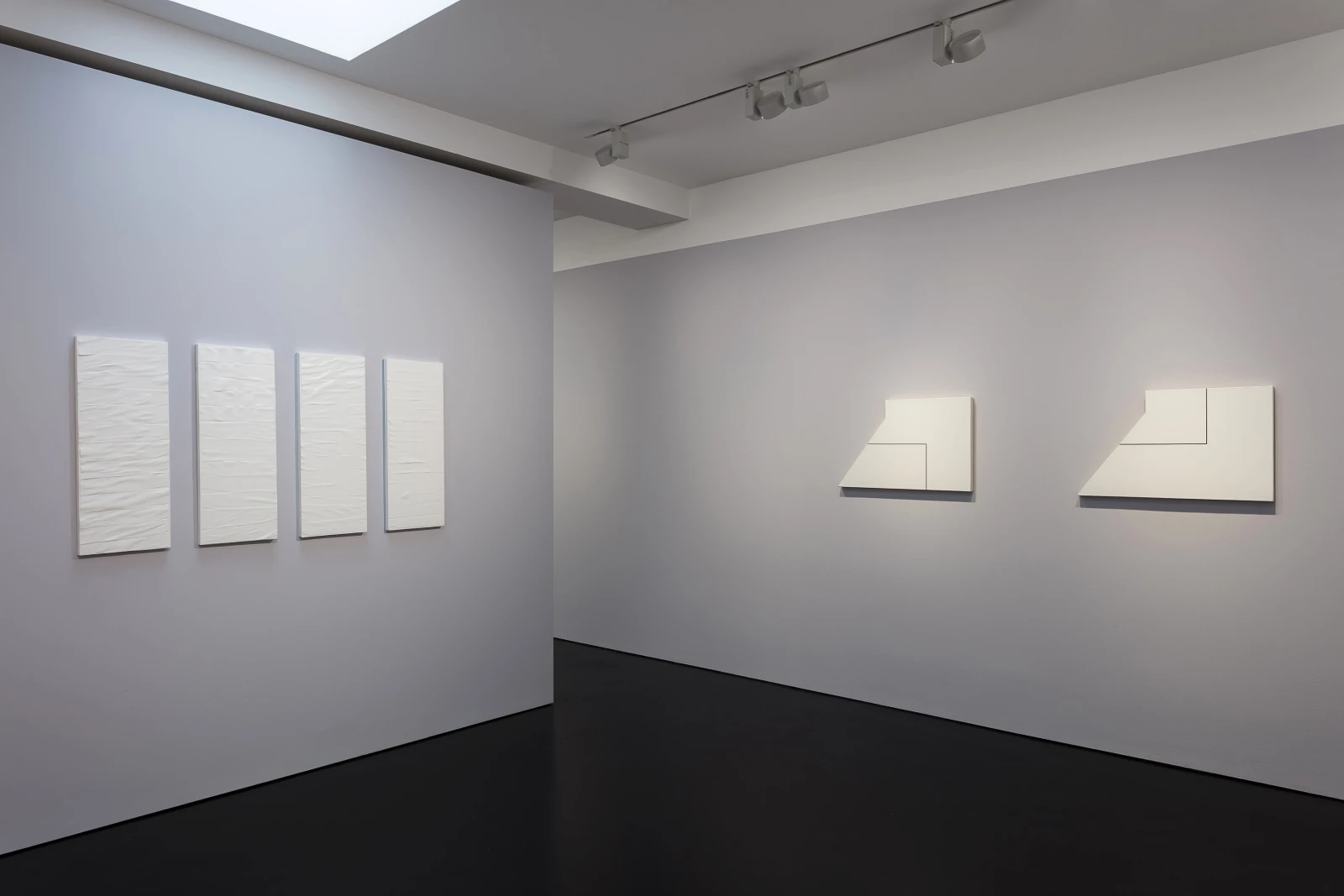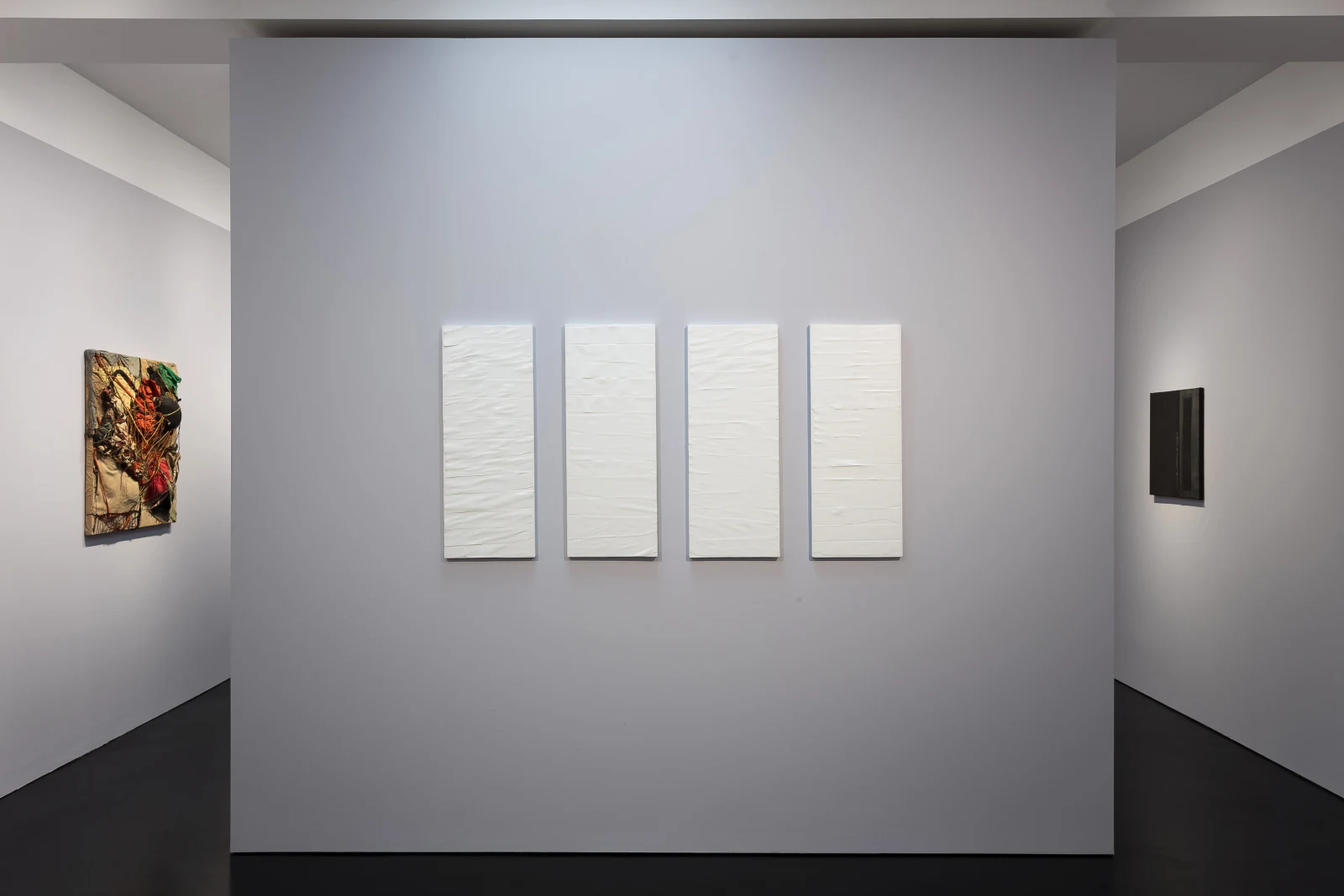
Painting on the Edge: A Historical Survey
Overview
‘Painting on the Edge: A Historical Survey’ brings together works by sixteen renowned masters and lesser-known artists from around the world and explores the radical approaches taken to painting in the post-war period.
The exhibition focuses on artists who veered away from the traditional methods of painting by knotting or completely removing the canvas, using shaped stretchers, and testing alternative materials. Many have never been shown together before and this presentation aims to draw new and pertinent parallels between their practices. This is the first time that Harmony Hammond, Sadaharu Horio, Tsuyoshi Maekawa, Kimiyo Mishima and Ted Stamm have been shown in England.
This exhibition includes work made from the 1950s to the 1980s. The aftermath of war was felt worldwide, and art produced during this time embodied the post-war sentiment. Artists sought to challenge existing modes of making art, particularly using performance in painting to make work that was relevant to a changing and disillusioned world. This exhibition brings together work made in Europe, South America, North America, and Asia, and the voices of artists born in regions as disparate as Russia, Peru, Japan and Zambia.
In her seminal 1979 essay titled ‘Sculpture in the Expanded Field’, Rosalind Krauss examines how “categories like … painting have been kneaded and stretched and twisted in an extraordinary demonstration of elasticity”. It was artists such as those presented here that forced apart the constraints of the term ‘painting’, to encourage an “organisation of work that is not dictated by the conditions of a particular medium”.
The ways in which artists have expanded the boundaries of painting are various. Sergio Camargo’s geometric precision, in which cylinders burst out from the wall in wave-like symphony, challenges the constraints of plane and volume. Though aesthetically different, Günther Uecker’s nails transform the surface of the canvas and narrate the movement of the artist’s hand in a similar way. Zilia Sánchez’s experiments with plane and volume use a more sensual vocabulary, stretching canvases over hand-moulded wooden armatures to explore the personal, the body, the self and the sculptural. Carol Rama, Harmony Hammond and Marcos Grigorian each use a very personal language of abstraction. Rama’s elegant use of transgressive materials like rubber and doll’s eyes narrate her childhood in postwar Italy, while Grigorian’s ‘earthworks’ have been described as ‘capsules of the landscape’ that felt so precarious at the time.
Sadaharu Horio and John Latham use found materials to create forms that protrude from and transform the board on which they are mounted. Latham’s work was intended to ‘hold a mirror’ to society, often using burnt books and spray paint to create powerful works that reflect societal turmoil. Similarly Raymond Hains and Kimiyo Mishima use the power of text and mass printing to transform the ‘painted’ surface with collage.
The cool white of Ted Stamm’s work stands aesthetically aside from this, instead using angled pentagonal canvases to complicate a Minimalist vocabulary with elongations suggestive of speed and the appearances of movement. This is interesting in comparison with Jorge Eielson’s paintings, which also have a smooth chromatic surface. The process is explicit as the canvas is transformed with a knot over the flat surface. Works by Howardena Pindell and Eleanore Mikus appear monochromatic but are in fact multilayered and textured. These contemplate materiality with nuance and intensity – Pindell simply using a hole-punch to create points of light and colour. Mikus layers white paint over unevenly cut wood until she attains a luminous surface – a state of vulnerable perfection.
Many of the artists included in this exhibition were overlooked by critical discourses at the time they were making work, and have since gained due acclaim. Perhaps too radical for their time, they are central to current conversations about the nature, relevance and history of painting. Art historian Gustavo Fares notes “These new ways are not … opposite to painting but, together with painting, are part of an expanded field as it has developed historically”.
Alberto Burri (Italian, 1915 – 1995), Sergio Camargo (Brazilian, 1930 – 1990), Jorge Eielson (Peruvian, 1924 – 2006), Marcos Grigorian (Iranian-Armenian, 1925 – 2007), Harmony Hammond (American, born 1944), Raymond Hains (French, 1926 – 2005), Sadaharu Horio (Japanese, born 1939), John Latham (British, 1921 – 2006), Tsuyoshi Maekawa (Japanese, born 1936), Eleanore Mikus (American, born 1927), Kimiyo Mishima (Japanese, born 1932), Howardena Pindell (American, born 1943), Carol Rama (Italian, 1918 – 2015), Zilia Sánchez (Cuban, born 1928), Ted Stamm (American, 1944 – 1984), Günther Uecker (German, born 1930).
The exhibition focuses on artists who veered away from the traditional methods of painting by knotting or completely removing the canvas, using shaped stretchers, and testing alternative materials. Many have never been shown together before and this presentation aims to draw new and pertinent parallels between their practices. This is the first time that Harmony Hammond, Sadaharu Horio, Tsuyoshi Maekawa, Kimiyo Mishima and Ted Stamm have been shown in England.
This exhibition includes work made from the 1950s to the 1980s. The aftermath of war was felt worldwide, and art produced during this time embodied the post-war sentiment. Artists sought to challenge existing modes of making art, particularly using performance in painting to make work that was relevant to a changing and disillusioned world. This exhibition brings together work made in Europe, South America, North America, and Asia, and the voices of artists born in regions as disparate as Russia, Peru, Japan and Zambia.
In her seminal 1979 essay titled ‘Sculpture in the Expanded Field’, Rosalind Krauss examines how “categories like … painting have been kneaded and stretched and twisted in an extraordinary demonstration of elasticity”. It was artists such as those presented here that forced apart the constraints of the term ‘painting’, to encourage an “organisation of work that is not dictated by the conditions of a particular medium”.
The ways in which artists have expanded the boundaries of painting are various. Sergio Camargo’s geometric precision, in which cylinders burst out from the wall in wave-like symphony, challenges the constraints of plane and volume. Though aesthetically different, Günther Uecker’s nails transform the surface of the canvas and narrate the movement of the artist’s hand in a similar way. Zilia Sánchez’s experiments with plane and volume use a more sensual vocabulary, stretching canvases over hand-moulded wooden armatures to explore the personal, the body, the self and the sculptural. Carol Rama, Harmony Hammond and Marcos Grigorian each use a very personal language of abstraction. Rama’s elegant use of transgressive materials like rubber and doll’s eyes narrate her childhood in postwar Italy, while Grigorian’s ‘earthworks’ have been described as ‘capsules of the landscape’ that felt so precarious at the time.
Sadaharu Horio and John Latham use found materials to create forms that protrude from and transform the board on which they are mounted. Latham’s work was intended to ‘hold a mirror’ to society, often using burnt books and spray paint to create powerful works that reflect societal turmoil. Similarly Raymond Hains and Kimiyo Mishima use the power of text and mass printing to transform the ‘painted’ surface with collage.
The cool white of Ted Stamm’s work stands aesthetically aside from this, instead using angled pentagonal canvases to complicate a Minimalist vocabulary with elongations suggestive of speed and the appearances of movement. This is interesting in comparison with Jorge Eielson’s paintings, which also have a smooth chromatic surface. The process is explicit as the canvas is transformed with a knot over the flat surface. Works by Howardena Pindell and Eleanore Mikus appear monochromatic but are in fact multilayered and textured. These contemplate materiality with nuance and intensity – Pindell simply using a hole-punch to create points of light and colour. Mikus layers white paint over unevenly cut wood until she attains a luminous surface – a state of vulnerable perfection.
Many of the artists included in this exhibition were overlooked by critical discourses at the time they were making work, and have since gained due acclaim. Perhaps too radical for their time, they are central to current conversations about the nature, relevance and history of painting. Art historian Gustavo Fares notes “These new ways are not … opposite to painting but, together with painting, are part of an expanded field as it has developed historically”.
‘Painting on the Edge: A Historical Survey’ brings together works by sixteen renowned masters and lesser-known artists from around the world and explores the radical approaches taken to painting in the post-war period.
Installation Views
